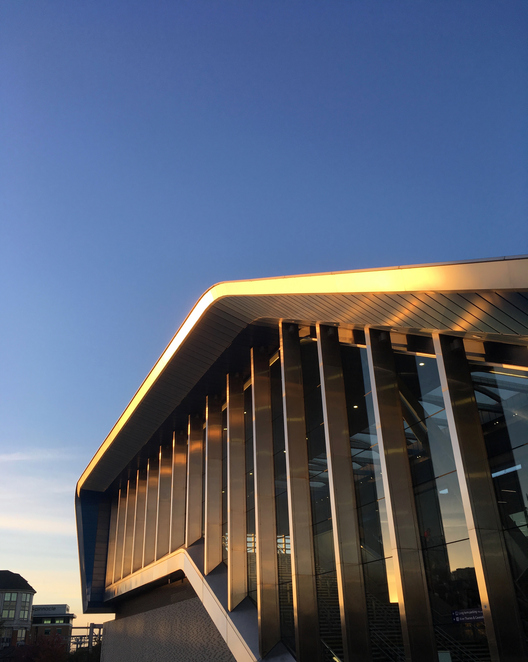Comment
Reading Transport Strategy: A glimpse into the future?
Consultation is currently underway on the Reading Transport Strategy 2036, running until 30 August.
It sets out a bold vision:
“Our vision is to deliver a sustainable transport system in Reading that creates an attractive, green and vibrant town with neighbourhoods that promote healthy choices and wellbeing. Future mobility options will enable everyone in Reading to thrive, enjoy an exceptional quality of life and adapt to meet future challenges and opportunities.”
The consultation documents are available here.
Firstly, Reading Borough Council should be commended for running this consultation during the current COVID-19 crisis. Whilst as a document not forming part of the statutory Development Plan, the consultation requirements are less prescriptive, the consultation marks a positive recognition that consultation can and should continue in the current environment. The Government have sent a clear message to local authorities that they must continue to perform their statutory functions including consultation, as discussed in our recent article Public Consultation needn’t be face-to-face.
In starting the consultation the council has highlighted that the strategy was drafted before COVID-19 arrived. Currently traffic levels in Reading are around one third of the level expected under normal conditions, bus use has reduced by around 85%, and people are using the streets for walking and cycling as part of their daily exercise. It is therefore timely that the consultation also includes a Local Cycling and Walking Infrastructure Plan.
As part of its response to the current crisis, the Government has unveiled a £2 billion travel scheme to “put cycling and walking at the heart of our transport policy”.
Clearly there is uncertainty as to how long and to what extent the current trends in travel, and home working, will be maintained. This potential culture change does however provide positive opportunities to respond to changed working practices and to maintain, where possible, the positive improvements that have arisen as a result of the current crisis, such as local and global improvements in air quality. We can expect a future draft of the Reading Transport Strategy to respond and reflect the new normal.
The current consultation proposes a diverse range of schemes and initiatives including demand management schemes, multi-modal schemes, public transport schemes, active travel schemes and network management schemes. Importantly, and positively, the schemes look beyond the borough’s tightly drawn boundaries and identify where collaboration will be required with adjoining authorities, amongst others, reflecting the strategic role of Reading within the Thames Valley. Given the significant and diverse projects currently planned for in the borough this will help to ensure the transport infrastructure locally is adapted to cope.
Disappointingly, the current draft of the document fails to grapple with the wider strategic infrastructure issues that the borough faces which were highlighted in the recent South East Transport Strategy (see South East transport strategy: A step-change in infrastructure connectivity?). These include journey times on Reading – Waterloo rail services, pressures and opportunities presented by expansion of Heathrow, opportunity for alternative M3/M4 link (avoiding Bracknell), and connections to Gatwick airport by rail. The document simply relies on lobbying on existing scheme proposals rather than setting a clear direction of travel as to the council’s aspirations for these. Positively however, it does include opportunities for prioritising non-car modes of travel and the provision of a new multi-modal third Thames crossing east of Reading as cited in the South East Transport Strategy.
It should therefore deliver a strategic visioning exercise of how the transport improvements will improve wider connectivity and further unlock the benefits of Reading and the wider Thames Valley.
It is encouraging to see the strategy make reference to the vital role that transportation has to play in our transition to a net zero economy. More than a third of our carbon emissions come from the transportation sector and it is critical to our goals that towns like Reading invest in the infrastructure to facilitate our transition. Whilst there is a reference to the obvious role that new technology such as hydrogen has to play in our transport sector, it would demonstrate real leadership if Reading and neighbouring authorities could partner with the private sector to trial new technology.
The Chancellor announced in the Spring Budget in March 2020 a promise of a 30 year national infrastructure plan recognising that infrastructure development delivers significant wider benefits. It will be important that Reading’s strategy allows the council to proactively plan for and lead the conversation on the necessary improvements to support not just the borough but also the wider region.
As the borough, and indeed the country, reflect on what the new normal will look like post-COVID-19 the consultation provides an opportunity to reflect on how we use and access our spaces. Whilst the need for social distancing will hopefully to a degree be eliminated by a vaccine in due course, it is clear that long lasting changes are likely to occur in how we use spaces, and how we work and travel.
It is positive that the strategy, although drafted in pre-crisis times, had in any event started to grapple with these issues and therefore it forms a strong foundation for the council to seek to proactively utilise new Government funding to deliver on its aspirations as we commence the return to work.

21 May 2020
